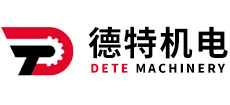Sun Xingshou, Chief Economist of China Building Materials Federation: China's cement industry has achieved carbon peak
Date:2024-01-02 Views82
Sun Xingshou, Chief Economist of the National Building Materials Federation
At the 2023 Building Materials Industry Conference, Yan Xiaofeng, President of the China Building Materials Federation, clearly stated that achieving carbon peak in the cement industry ahead of schedule has become a reality, and the building materials industry is fully achieving carbon peak, ushering in the era of carbon neutrality. The proposal of this conclusion is based on a scientific judgment of the development trend of the cement industry.
In terms of production, China's cement production reached a historical peak of 2.49 billion tons in 2014, with a cement clinker production of 1.42 billion tons that year. In 2020, China's cement clinker production reached a historical peak of 1.58 billion tons, with a cement production of 2.38 billion tons that year. From the perspective of carbon emissions, since the peak of 1.23 billion tons of carbon dioxide emissions in China's cement industry in 2020, it has decreased for two consecutive years in 2021 and 2022, with a cumulative decrease of 13.9%. It is expected that the decline will continue in 2023. Based on factors such as macro environment, technological development, and market changes, it can be determined that the carbon emissions of the cement industry may fluctuate in the future, but the carbon peak has already been achieved.
The macro environment centered on "dual carbon" has been gradually improved, continuously guiding the carbon reduction and transformation of the cement industry. In October 2021, the "Opinions of the Central Committee of the Communist Party of China and the State Council on Fully Implementing the New Development Concept and Doing a Good Job in Carbon Peaking and Carbon Neutrality" and the "Action Plan for Carbon Peaking before 2030" of the State Council were successively issued, completing the overall deployment of China's carbon peaking and carbon neutrality work from the top-level design. As a symbol, various fields and regions have successively issued carbon reduction planning guidance documents such as the "Implementation Plan for Carbon Peaking in the Building Materials Industry" and the "Energy Carbon Peaking Implementation Plan". Specific measures such as the "Implementation Guidelines for Energy Conservation and Carbon Reduction Transformation and Upgrading in Key Areas of High Energy consuming Industries" and the "Stable Growth Plan for the Building Materials Industry" have also been implemented. The construction of a national carbon emission trading market in the cement industry The comprehensive implementation of ultra-low emission transformation in the cement industry is accelerating. Recently, as a major institutional adjustment for China's comprehensive green and low-carbon transformation in the economy and society, the "Opinions on Promoting Energy Consumption Dual Control and Gradually Shifting to Carbon Emission Dual Control" have been released, indicating the establishment of a macro environment for systematically and comprehensively promoting the green and low-carbon transformation and development of the building materials industry. The carbon emissions of China's cement industry account for about 83% of the carbon emissions of the building materials industry, 10% of the total national carbon emissions, and 3% of the global carbon emissions. Carbon reduction will become a long-term task for the cement industry, and the development direction of carbon reduction in the cement industry is irreversible.
The rapid development of energy-saving and carbon reduction technologies continues to promote the carbon reduction and improvement of the cement industry. In 2022, the China Building Materials Federation organized a systematic review of applicable technologies and cutting-edge technology systems in the cement industry, focusing on the requirements of the "dual carbon" target. The "Carbon Reduction Technology Guidelines for the Cement Industry" were compiled to provide guidance and support for enterprises to improve energy conservation and carbon reduction. The rapid development of energy-saving and carbon reducing processes, technologies, and equipment such as large-scale substitution of raw materials and fuels in the cement industry, oxygen rich combustion in cement kilns, and complete sets of low-energy cement grinding technology and equipment is accelerating the improvement of energy efficiency in the cement industry. Cement enterprises have made energy-saving and carbon reduction transformation and improvement the primary task of production and operation management. At present, domestic production enterprises have achieved a reduction in energy consumption per unit product of cement clinker to below 50kgce/t, and the comprehensive energy consumption of cement grinding can be reduced to 20kWh/t. As of the first half of 2023, the comprehensive energy consumption per unit product of cement clinker has decreased by 3% compared to 2020, and the proportion of cement clinker production capacity that meets or exceeds the energy efficiency benchmark value has reached 13%, an increase of more than 10 percentage points compared to 2020. In order to further tap into the carbon reduction potential of the cement industry, starting from 2021, the China Building Materials Federation has continuously organized "unveiling and commanding" scientific and technological breakthroughs around major processes, technologies, equipment, products, and the construction of "Six Zero" demonstration factories in the building materials industry for energy conservation, pollution reduction, and carbon reduction. Significant progress has been made in key technologies such as green hydrogen energy calcination of cement clinker, carbon dioxide conversion and utilization of cement kiln flue gas, and the construction of "zero fossil" energy demonstration factories, It will further support carbon reduction and carbon neutrality in the cement industry. In addition, the development and application of low-carbon cement products, as well as the refinement and reduction of cement clinker under the demand for building carbon peak, will continue to promote carbon reduction in the cement industry. The low-carbon trend of technological development in the cement industry is irreversible.
The demand for cement products remains stable and tends to decrease, continuously driving the cement industry to reduce carbon emissions and improve quality. Since the beginning of the new era, China's economic structure has accelerated adjustment, and the driving effect of consumption on the country's economy has exceeded that of investment. The investment rate has fallen from its peak of 47% to basically stable at around 43%. In recent years, the real estate industry has undergone significant adjustments. In 2022, the investment completion of real estate development enterprises decreased by 13.2%, and it is expected to continue to decline by more than 9.0% in 2023; The proportion of traditional infrastructure in fixed assets investment has significantly decreased, and the impetus to the cement industry has gradually weakened. The weakening demand has led to a continuous decline in cement production. Since 2021, China's cement production has been declining for three consecutive years, and it is expected to decrease by 15% in 2023 compared to 2020. Referring to the development experience of major economies in the world such as Europe and America, with the adjustment of China's economic structure, the proportion of investment rate will further decline, and the demand for cement products will gradually decrease. Coupled with factors such as the refinement and reduction of cement product utilization, it is expected that China's water and mud demand will drop to below 1.8 billion tons by 2030. The decrease in the total production of cement products has shifted towards pursuing effective improvement in quality, which has led to an irreversible trend in carbon emissions in the cement industry.
In summary, we can clearly analyze and judge that the cement industry has achieved carbon peak, but carbon peak is not the ultimate goal of industry development, but a new starting point for industry development. The cement industry should recognize the changing situation, adhere to technological innovation as the starting point, continuously promote carbon reduction work, actively plan carbon neutrality, layout new development, reshape industry positioning and value shaping, and actively promote the formation of a modern building materials industry system from a higher level and more systematic perspective, so as to more fully, safely, and timely respond to this global systemic change.
Source: CBMF Industry Work Department
Editor: Feng Weitao
Reviewed by: Zeng Yunyao
Original title: China's cement industry has achieved carbon peak









